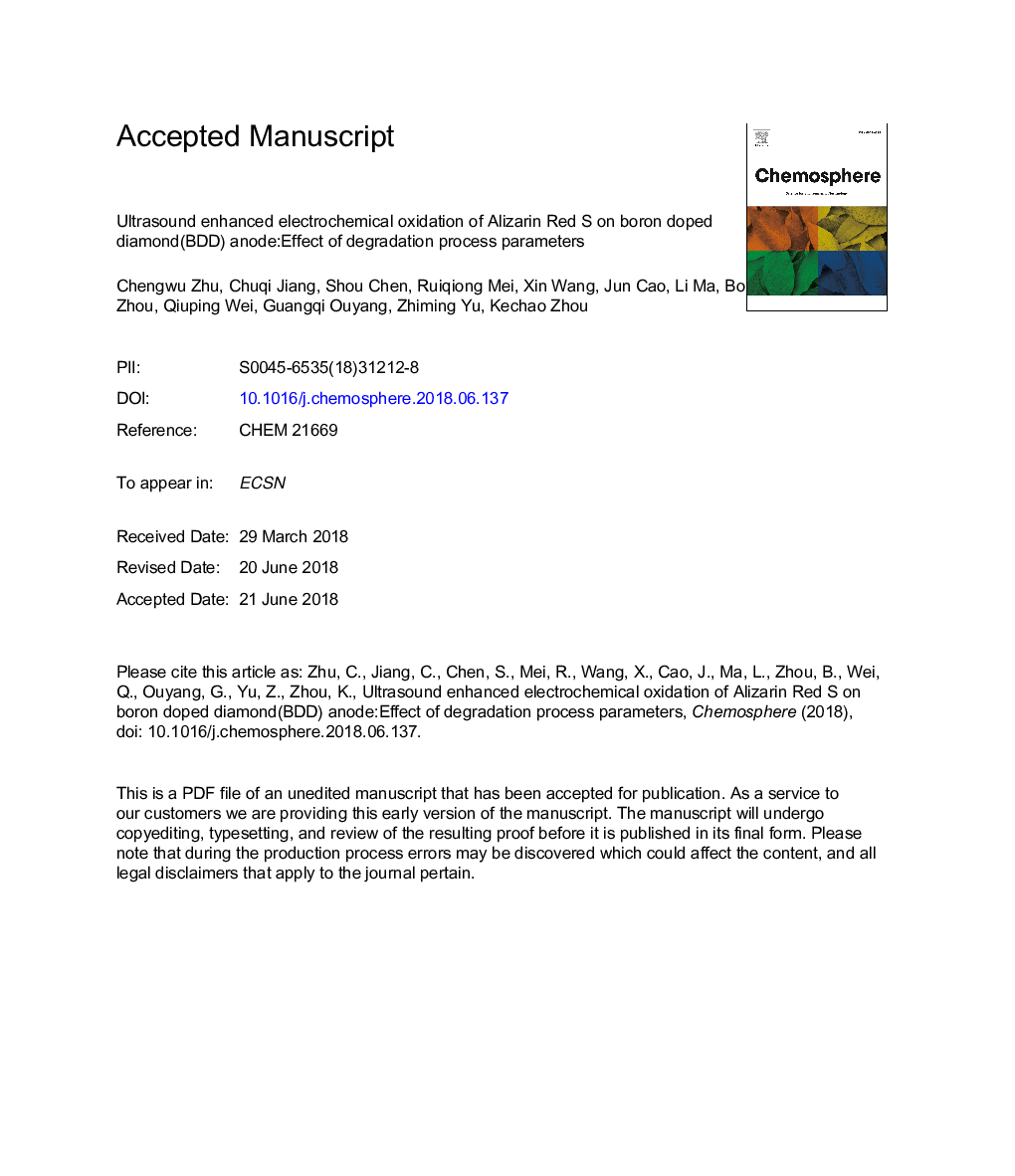| کد مقاله | کد نشریه | سال انتشار | مقاله انگلیسی | نسخه تمام متن |
|---|---|---|---|---|
| 8850551 | 1618762 | 2018 | 36 صفحه PDF | دانلود رایگان |
عنوان انگلیسی مقاله ISI
Ultrasound enhanced electrochemical oxidation of Alizarin Red S on boron doped diamond(BDD) anode:Effect of degradation process parameters
دانلود مقاله + سفارش ترجمه
دانلود مقاله ISI انگلیسی
رایگان برای ایرانیان
کلمات کلیدی
موضوعات مرتبط
علوم زیستی و بیوفناوری
علوم محیط زیست
شیمی زیست محیطی
پیش نمایش صفحه اول مقاله

چکیده انگلیسی
Textile wastewater is characterized by high toxicity, complex structure, and resistance to biodegradation. Therefore, advanced oxidation technologies have received extensive attention. However, it is usually difficult to achieve a desired degradation effect using a single technology. The combination of various advanced oxidation technologies is an important way to achieve efficient degradation of organic wastewater. The present investigation was focused on ultrasound enhanced electrochemical oxidation (US-EO) of typical anthracene Alizarin Red S dye on a boron doped diamond anode. Our work indicates that ultrasonic oxidation technology which is mainly based on cavitation, can produce strongly oxidizing active substances such as OH, HO2, O, and H2O2, that accelerate the destruction of the dye molecular structure and achieve dye decolorization and mineralization. The effects on cavitation and decomposition of ARS by the parameters that affect degradation, including solution temperature, initial pH, and electrolytes, were examined. Results show that low temperature was more conducive to ultrasonic cavitation in the US-EO process; the degradation efficiency rate of EO was higher than that of US-EO when the solution temperature was above 45â¯Â°C. Ultrasonic cavitation was significantly more efficient in acid than in alkaline conditions. Almost 100% color removal and 86.07% COD removal was achieved for 100â¯mgâ¯Lâ1 ARS concentration with a 0.05â¯M Na2SO4 electrolyte, temperature of 30â¯Â°C and pH of 4.97 after 3â¯h. GC-MS analysis showed that the intermediate products of ARS in the US-EO process were phthalic anhydride, PEAs and bisphenol A, which is eventually mineralized to CO2 and H2O.
ناشر
Database: Elsevier - ScienceDirect (ساینس دایرکت)
Journal: Chemosphere - Volume 209, October 2018, Pages 685-695
Journal: Chemosphere - Volume 209, October 2018, Pages 685-695
نویسندگان
Chengwu Zhu, Chuqi Jiang, Shou Chen, Ruiqiong Mei, Xin Wang, Jun Cao, Li Ma, Bo Zhou, Qiuping Wei, Guangqi Ouyang, Zhiming Yu, Kechao Zhou,